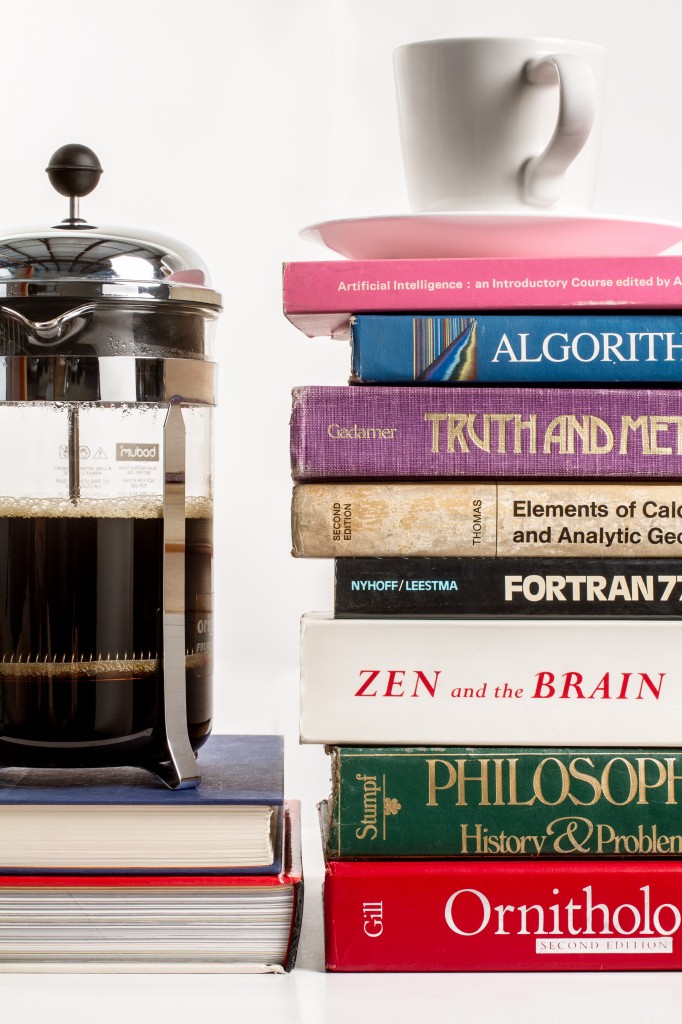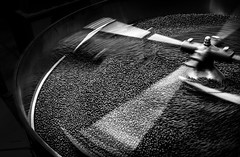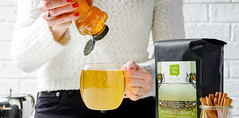 Some of the most common questions we get here from customers concern decaf: how our coffee is decaffeinated, how much caffeine is in our decaf, why would a person drink decaf, and the like. We hear from a lot of newly caffeine-free coffee lovers who want a little guidance in navigating this new world and maybe a shoulder to cry on.
Some of the most common questions we get here from customers concern decaf: how our coffee is decaffeinated, how much caffeine is in our decaf, why would a person drink decaf, and the like. We hear from a lot of newly caffeine-free coffee lovers who want a little guidance in navigating this new world and maybe a shoulder to cry on.
There is so much more to love about coffee than caffeine alone, and we certainly do not share the “why bother” attitude about decaf of some coffee enthusiasts. As glorious as caffeine is, there are plenty of sound reasons why you might want to limit your intake. Starting with high-quality beans decaffeinated to preserve flavor, our decafs are given the same fresh roasted treatment as our regular coffees. If you’ve steered clear of decaf since the grim instant-only days, you’re in for a surprise.
Back to those questions.
How much caffeine is in our decaf?
It is impossible to remove all of the caffeine from coffee, but according to the industry standard, 97% or more of the original caffeine has been removed from all of our decaf coffee. Caffeine levels vary not only with the variety of coffee and roast level, but also with the grind level and brewing method. Generally speaking, Arabica coffees are lower in caffeine in Robusta. You’ll find some Robusta in many of our blends, including espressos. All of our single-origin coffees are 100% Arabica. Another general rule of thumb: the lighter the roast, the higher the caffeine content. Dark roast coffees have been exposed to more heat, which breaks down the caffeine molecule. Finally, preparation matters too. With a fine grind, more of the coffee comes in contact with the water during the brewing process (it’s a surface area thing), and more caffeine winds up in your cup. The longer the water is in contact with the grounds, the more caffeine you are getting. Sound complicated? That’s why we can’t answer that question in milligrams per cup, unfortunately. Once you know a little bit about the factors affecting caffeine content however, you might find that you have more options and more control over your caffeine consumption than you thought.
How is your coffee decaffeinated?
We currently offer coffees decaffeinated by three different methods: methylene chloride, carbon dioxide, and Swiss Water Process. Unless otherwise specified, our decafs are decaffeinated using the methylene chloride method. Methylene Chloride is a solvent that targets and removes caffeine more precisely than other methods, leaving more of the bean and more of the flavor behind. The FDA considers a residual amount of 10 parts Methylene Chloride per million safe for consumption, but far less remains prior to roasting, which removes the remaining traces. CO2 Decaffeination employs a similar technique, using carbon dioxide as the caffeine-extracting solvent. Water alone is the solvent in the Swiss Water Process method, which returns water-soluble flavor components to the beans (minus the caffeine) after extraction. SWP Decaf boasts the highest levels of caffeine removal and is a popular chemical-free alternative. Why do we offer all three? Methylene Chloride is considered by many to yield the most flavorful results, while CO2 and Swiss Water Decafs have many fans of their own as more natural alternatives.
Does all decaf coffee have no soul?
As a part of the pregnancy tidal wave that swept CBD in the last year, I had ample opportunity to explore our decaf options and overcome my bad attitude about decaf. Kind of. I still prefer caffeine, but it’s not about flavor. It’s about 1AM, 3AM, and 6AM feedings. For all you reluctant converts out there, it is possible to find a decaf you will look forward to drinking. To get started, try something similar in roast level and origin to what you already love. If you’re not sure what that is, our customer favorites include Decaf Colombian, Decaf Dark Sumatra, Decaf French Roast, and Decaf House Blend. Or try one of our pregnant staff favorites: Decaf Ethiopian on the lighter end, Decaf Dark Costa Rican for the dark drinkers. Still not sure? Give us a call, and we’re happy to point you in the right direction!



















